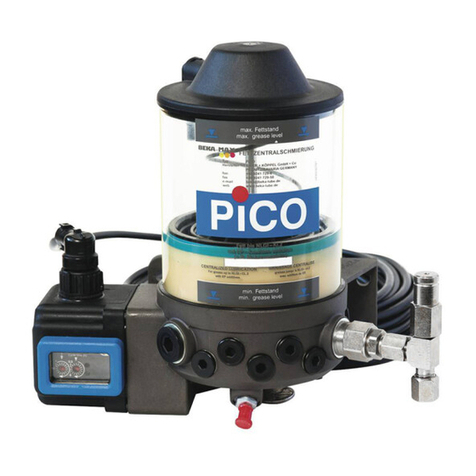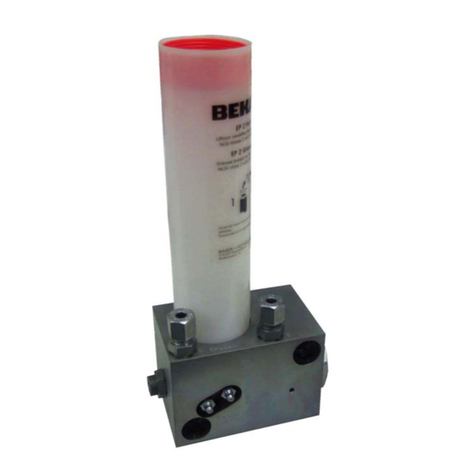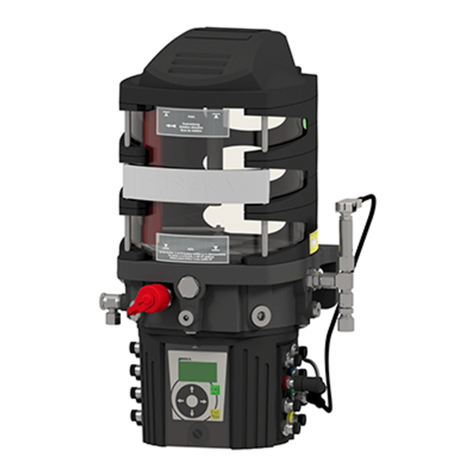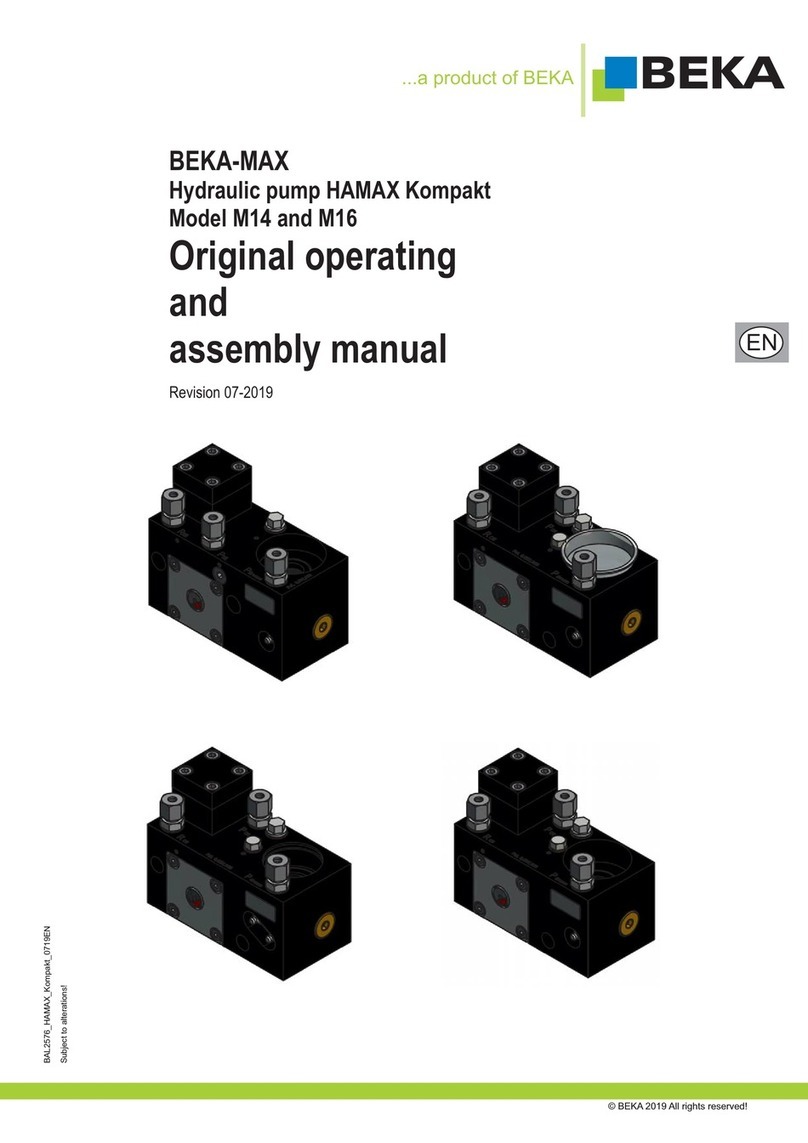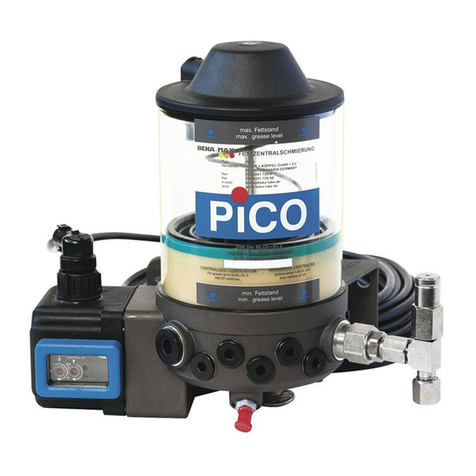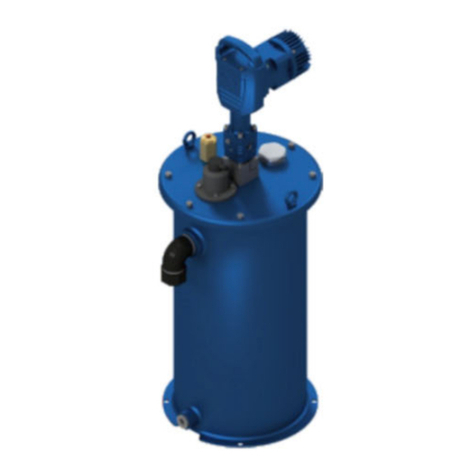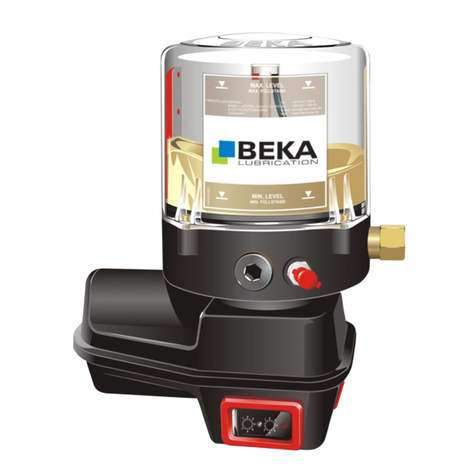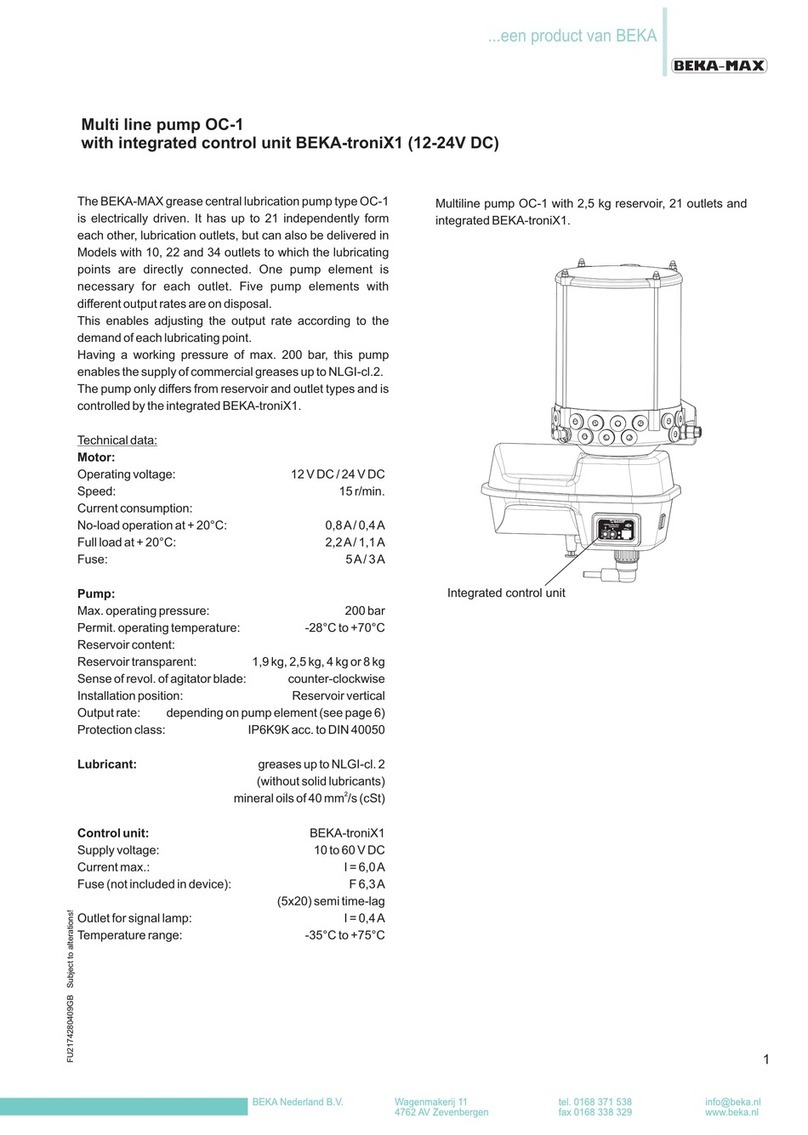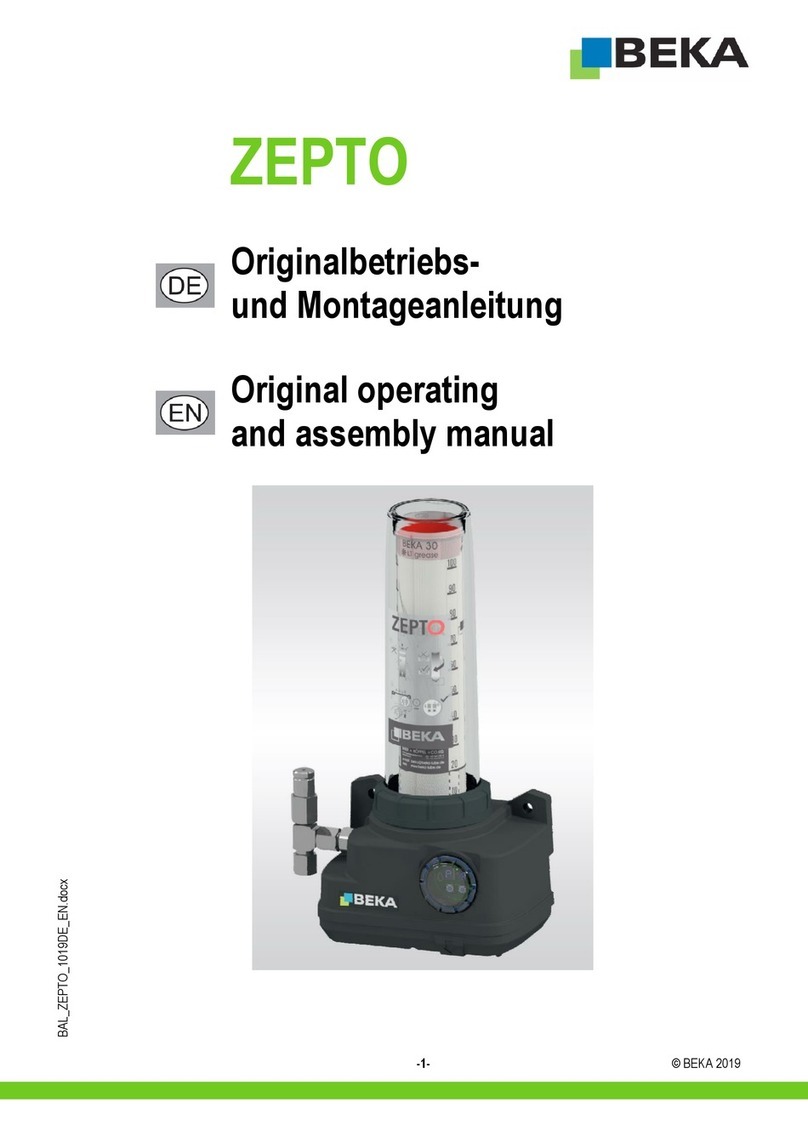
Page 2 © BEKA 2019 All rights reserved!
...a product of
BAL2522_2523_Barrel_pump_Stream_H_0619EN
Table of contents
1.Technical data ................................................................................................................................................................................4
1.1General......................................................................................................................................................................................4
1.2Pump individually.......................................................................................................................................................................4
1.3Pump – barrel version................................................................................................................................................................ 4
1.4Pump – container version..........................................................................................................................................................4
1.5Solenoid valve – single-line version...........................................................................................................................................4
1.6Level monitoring ........................................................................................................................................................................4
2.Applicable documents.....................................................................................................................................................................5
3.Code ...............................................................................................................................................................................................5
4.Versions..........................................................................................................................................................................................7
5.General safety instructions .............................................................................................................................................................9
5.1Safety instructions .....................................................................................................................................................................9
5.2Qualification and training of staff ...............................................................................................................................................9
5.3Hazards in case of non-observance of the safety instructions ................................................................................................10
5.4Obligations of the operator / user ............................................................................................................................................10
5.5Safety instructions for maintenance, inspection and assembly ...............................................................................................10
5.6Unauthorized modification and production of spare parts .......................................................................................................10
5.7Inadmissible modes of operation.............................................................................................................................................11
5.8Electrostatic discharge............................................................................................................................................................. 11
5.9General hazard warning – residual risk ...................................................................................................................................11
6.Intended use.................................................................................................................................................................................12
7.Scope of warranty.........................................................................................................................................................................12
8.Transport and storage ..................................................................................................................................................................13
8.1Pump .......................................................................................................................................................................................13
8.2Beka Stream H barrel version..................................................................................................................................................13
8.3Beka Stream H container version............................................................................................................................................13
9.Assembly instructions...................................................................................................................................................................14
9.1Prefilling of return connection (lubricant) ................................................................................................................................. 14
9.2Assembly of Beka Stream H barrel version.............................................................................................................................16
9.3Assembly of Beka Stream H container version .......................................................................................................................16
9.4Hydraulic connection of the motor ...........................................................................................................................................17
9.5Power connection ....................................................................................................................................................................18
10.Start up .........................................................................................................................................................................................19
10.1Lubricants ................................................................................................................................................................................19
10.2Ventilation of the lubrication system ........................................................................................................................................19
10.3Adjustment of the level monitoring (barrel version) .................................................................................................................19
10.4Setting the level monitoring (container version).......................................................................................................................19
10.5Initial filling of container with lubricant .....................................................................................................................................20
10.6Delivery volume .......................................................................................................................................................................21
11.Functional description...................................................................................................................................................................22
11.1General....................................................................................................................................................................................22
11.2Pump .......................................................................................................................................................................................22
11.2.1Hydro motor ....................................................................................................................................................................22
11.3Add-on parts ............................................................................................................................................................................23
11.3.1Level monitoring..............................................................................................................................................................23
11.3.2Ventilation valve.............................................................................................................................................................. 23
11.3.3Grease level dipstick.......................................................................................................................................................23
11.3.4Single-line block (optional)..............................................................................................................................................23
11.3.5Pressure limiting valve (optional) ....................................................................................................................................23
12.Maintenance .................................................................................................................................................................................24
12.1General maintenance ..............................................................................................................................................................24
12.2Lubricant change .....................................................................................................................................................................24
12.3Filling of the container.............................................................................................................................................................. 25
12.4Exchange of barrel................................................................................................................................................................... 26
12.5Exchange of pump...................................................................................................................................................................27
13.Repair ...........................................................................................................................................................................................28
13.1Exchange of pump element ............................................................................................................................................28
